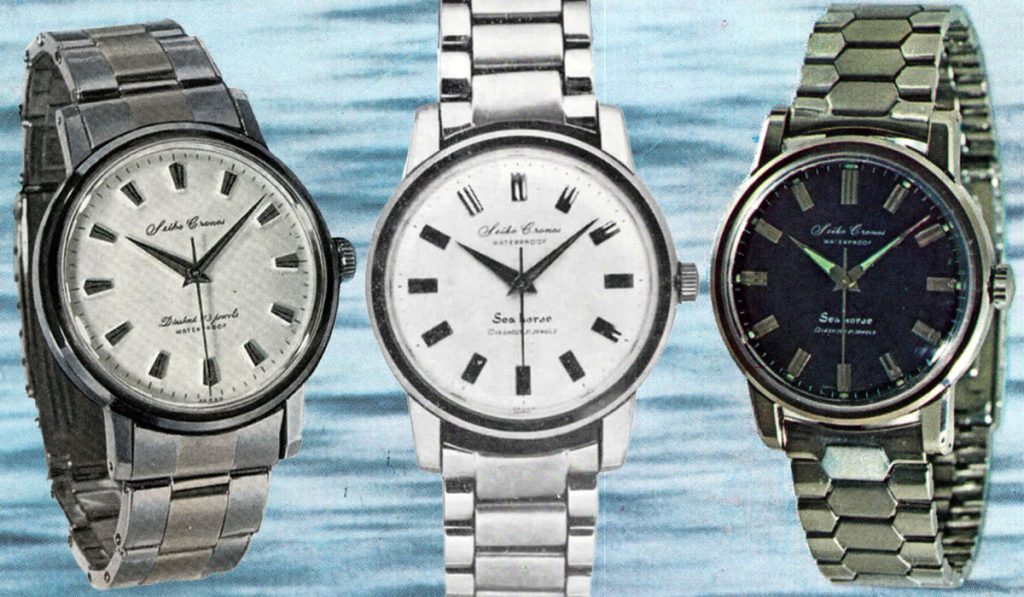
In 1959, Seiko introduced its first “WaterProof” wristwatch to the Japanese market, featuring a water resistance of 50 meters. The Cronos WaterProof, with case code J13028, is featured alongside the Laurel Alpinist in the December 1959 issue of Seiko News.
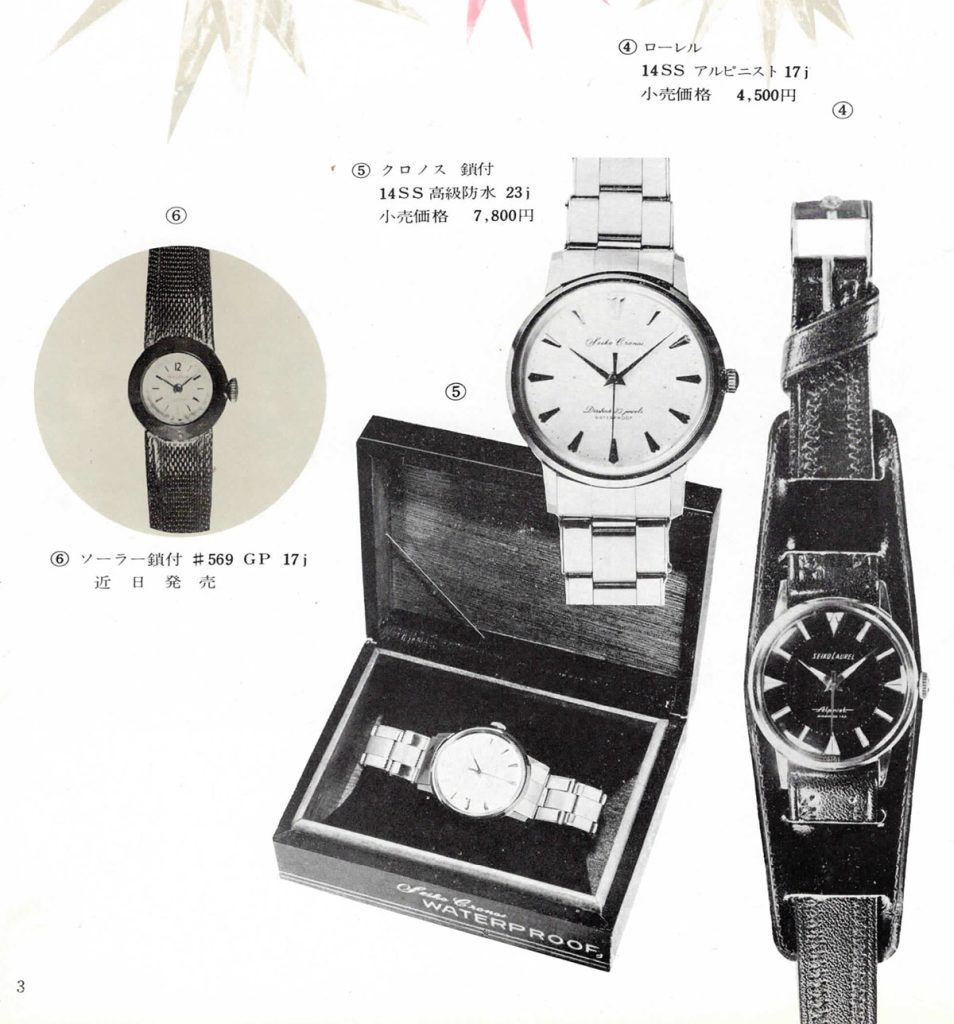
The Cronos WaterProof represents Seiko’s response to a growing market demand for water-resistant watches suitable for sports and outdoor activities.
It was presented as a luxury waterproof watch, safe for use during skiing, skating, and winter mountain hiking, for swimming in the summer, and also for daily water-related activities.
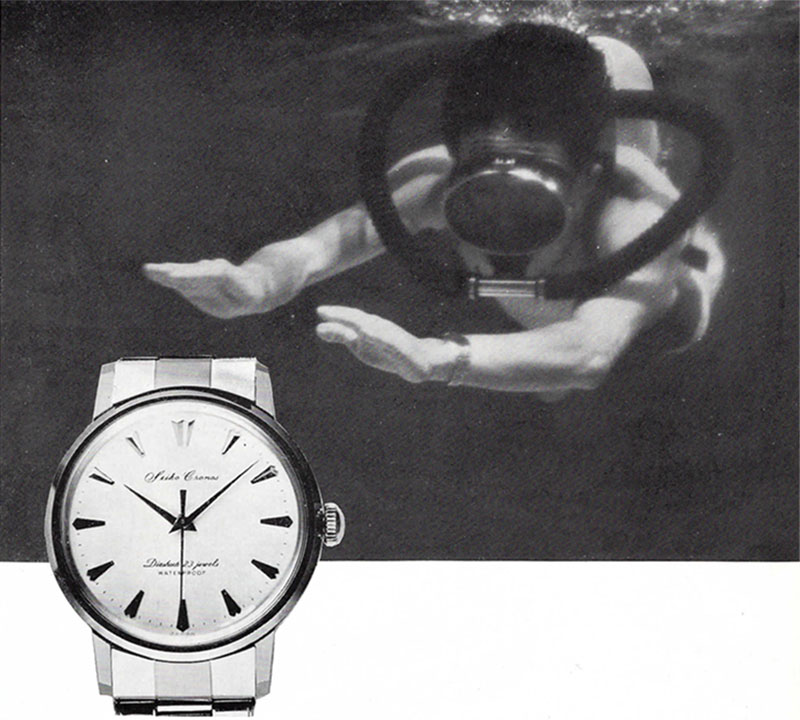
In various promotional photos from the time, the Cronos is even shown on the wrists of divers, highlighting Seiko’s confidence in the performance of this model.
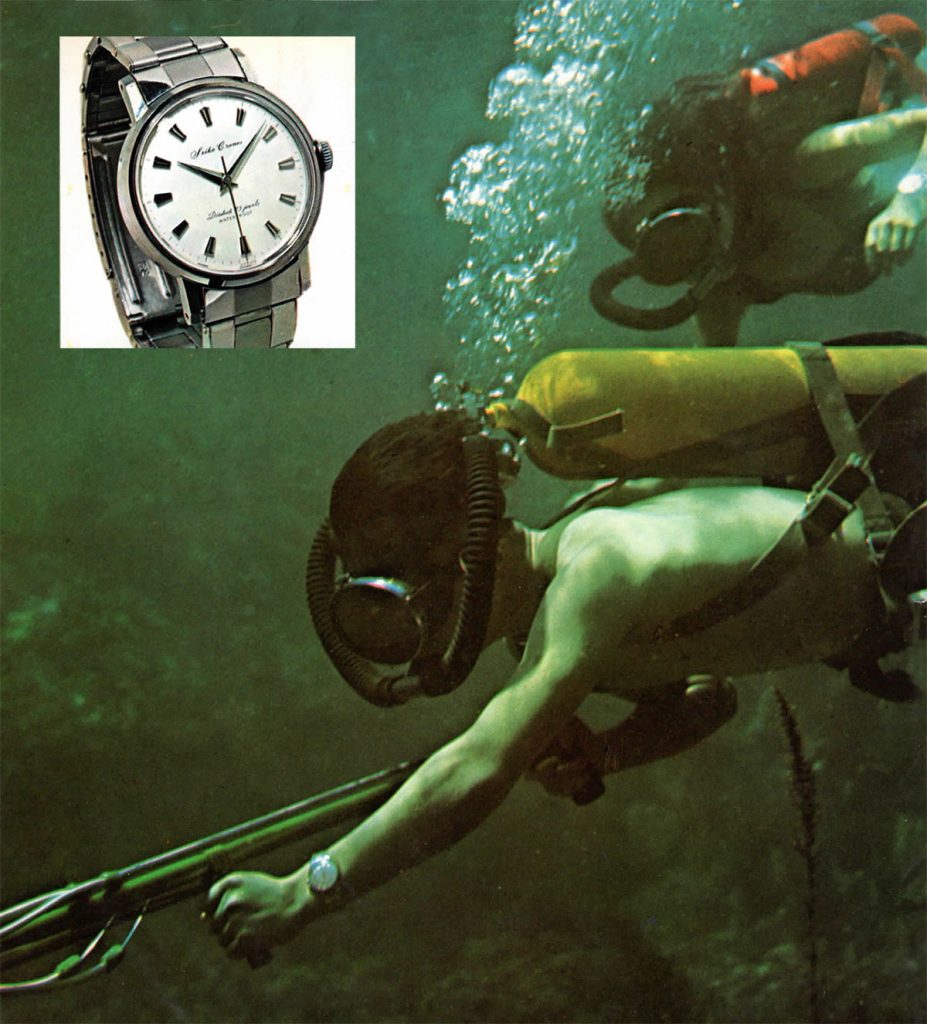
The stainless steel case and the watch glass were designed and tested to withstand water pressure up to 50 meters, thanks to special O-ring seals.
The case back, consisting of a main part and an outer ring, was screwed onto the case, thereby compressing the seal.
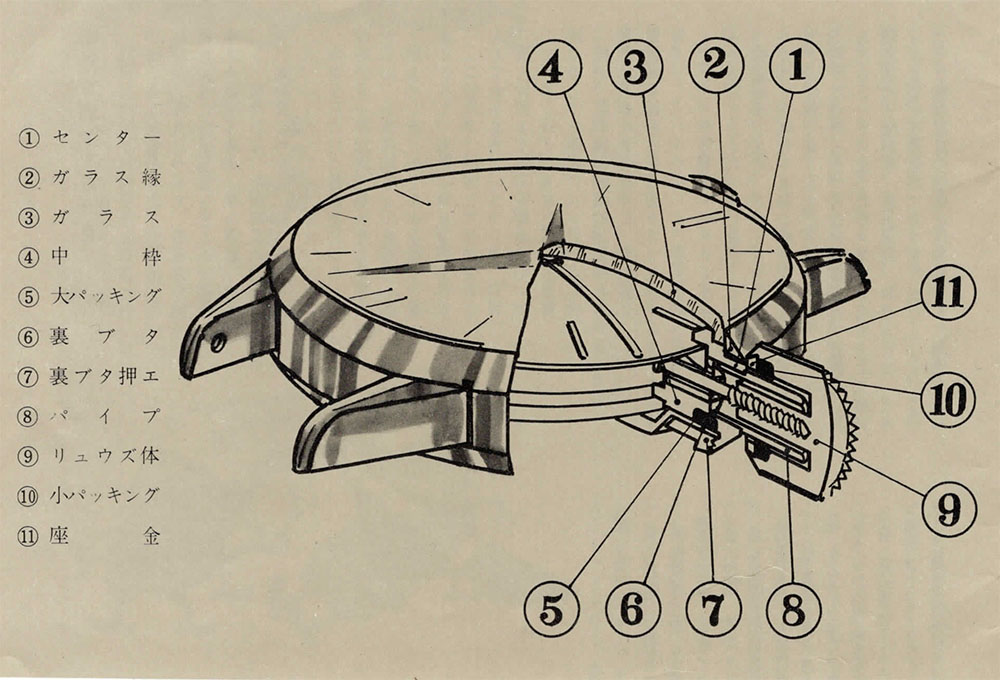
The movement, a manual-wind mechanical caliber designed by Daini Seikosha, is the same one already used for the other non-waterproof models in the Cronos series. Equipped with DiaShock, DiaFlex, and DiaFix systems, it is a particularly robust and reliable movement.
Specifications and Case Codes of the Cronos WaterProof
There are at least three different case codes associated with the Cronos WaterProof: J13028, J13032, and J13046. The following table lists the different configurations available, but it cannot be ruled out that there may be others.
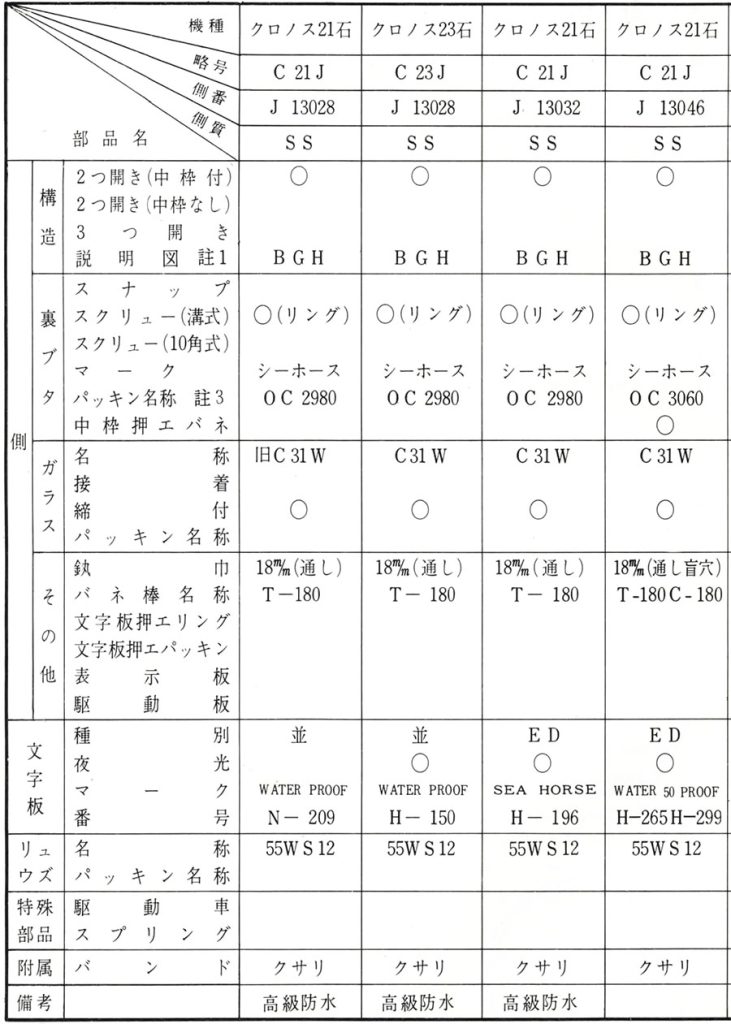
The Cronos J13028 is available in two versions, one with 21 jewels and the other with 23 jewels, while the J13032 and J13046 are only reported with a 21-jewel movement.
All the models mentioned in this table have a stainless steel case with the seahorse logo on the case back. The J13028 features the inscription “Water Proof” on the dial, the J13032 has “Sea horse,” and the J13046 displays “Water 50 Proof.”
The Seahorse mark
On the case back of the Cronos WaterProof, the Seahorse mark appears for the first time, which can also be seen depicted in the official 1960 catalog, alongside a beautiful 23-jewel Cronos J13028.
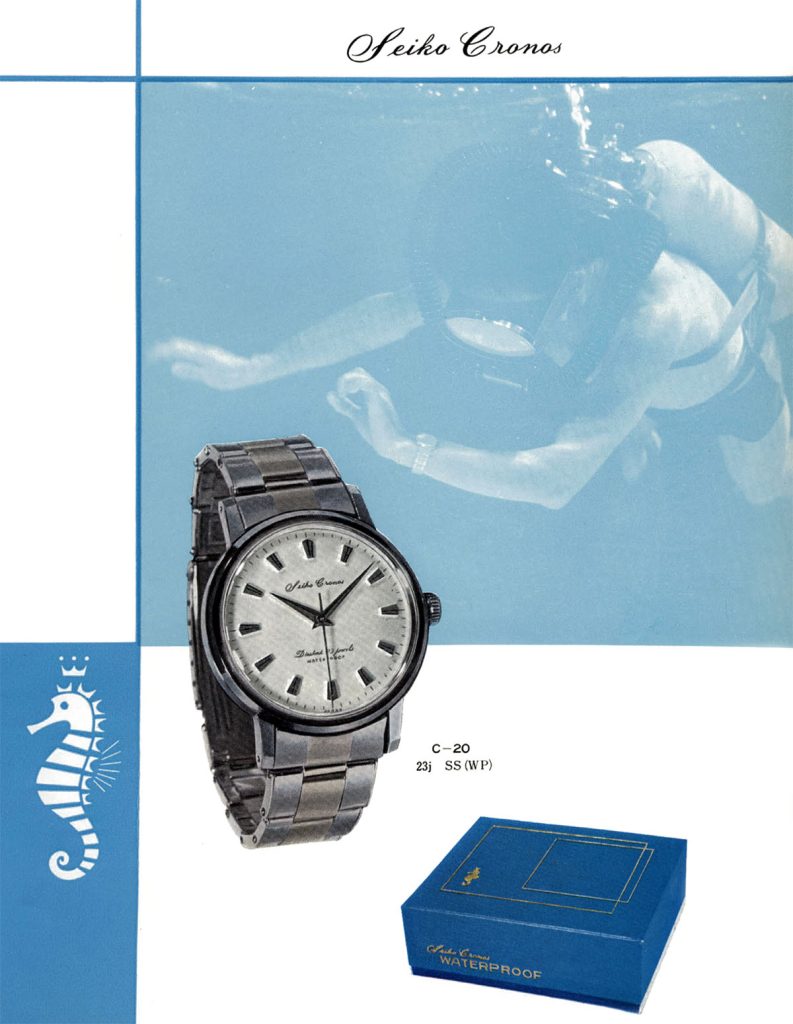
In the February 1961 issue of Seiko News, a model of the Cronos WaterProof with the inscription “Sea horse” clearly visible on the dial was introduced to Seiko authorized dealers. The case code is J13032.
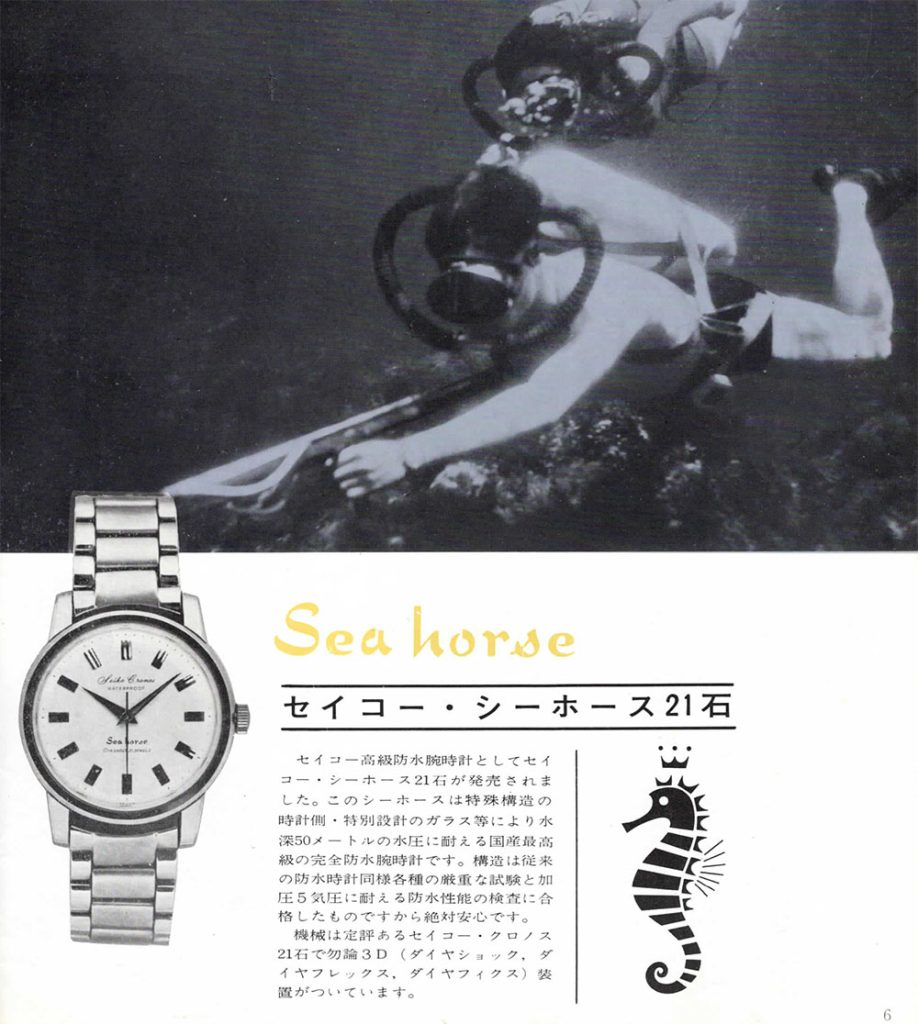
“The Seiko Sea Horse with 21 jewels, a luxury waterproof wristwatch, was launched as part of Seiko’s line of luxury waterproof watches.
This Sea Horse, with its special structure and specially designed glass, is the domestically produced fully waterproof watch that withstands water pressure up to 50 meters, the highest level available.
Its structure has passed various rigorous tests and inspections for water resistance at a pressurization of 5 atmospheres, thus offering absolute safety.
The mechanism is the renowned Seiko Chronos with 21 jewels, and naturally, it is equipped with 3D (DiaShock, DiaFlex, DiaFix).”
In some cases, the seahorse is also found on the bracelet.
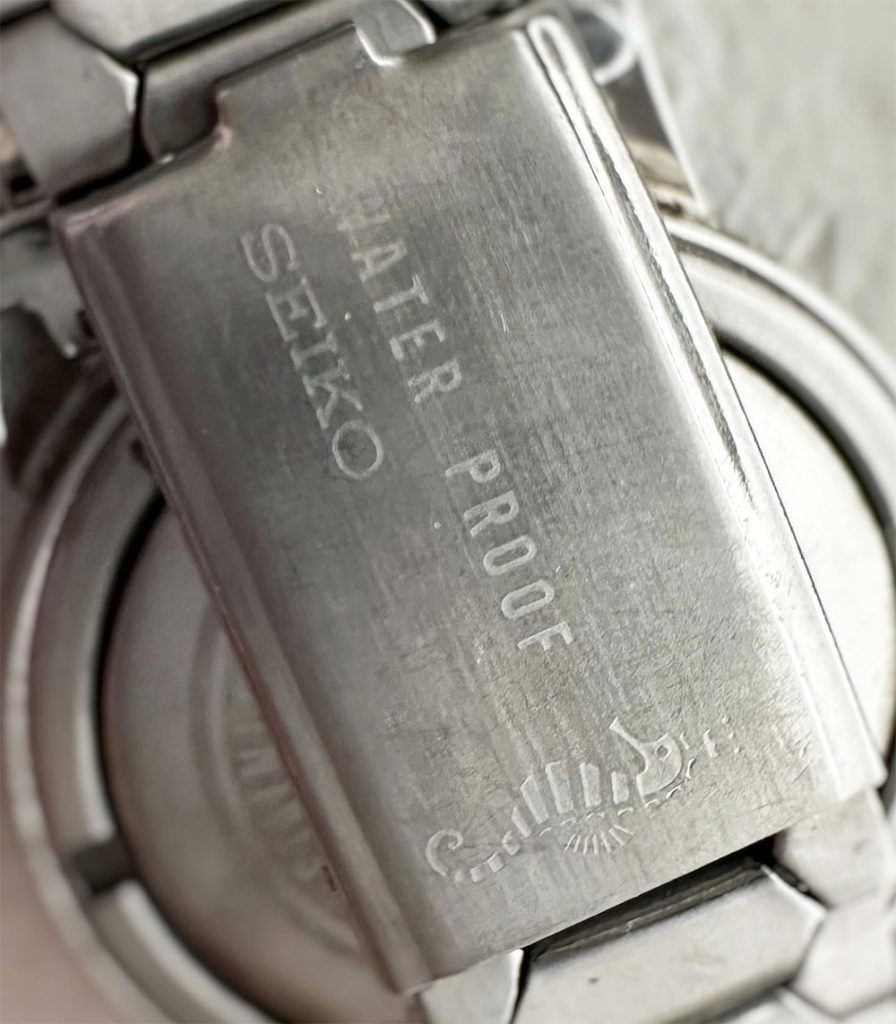
The Seahorse mark has been used by Seiko over the years, not only on the Cronos WaterProof, but on a variety of water-resistant models.
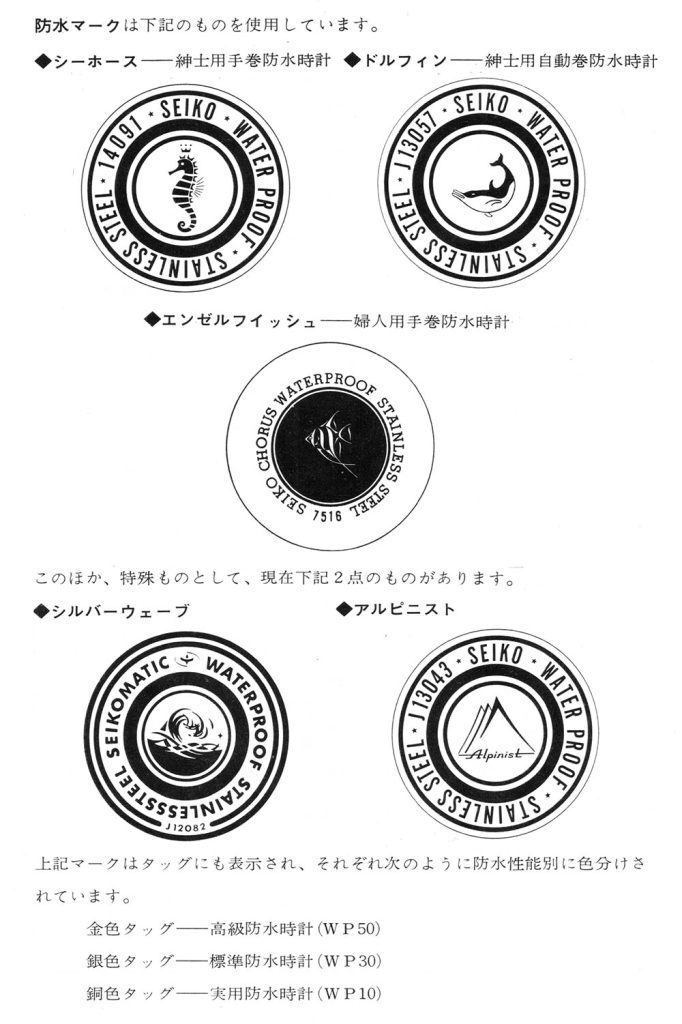
In the technical manual published in 1963, Seiko explains the use of the Seahorse symbol for manual-wind “Water Proof” men’s watches, while the Dolphin symbol was used for automatic-wind models.
This was the general rule in the 1960s, which can be seen in the list of models available on the Japanese market at the time, although there are exceptions to the use of different symbols.
The JARE-5 expedition in Antarctica
The fifth Japanese Antarctic expedition departed from Tokyo on November 11 of 1960, and returned on May 4 of 1961, after completing its mission.
The team of explorers was provided with various Seiko watches to use in Antarctica.
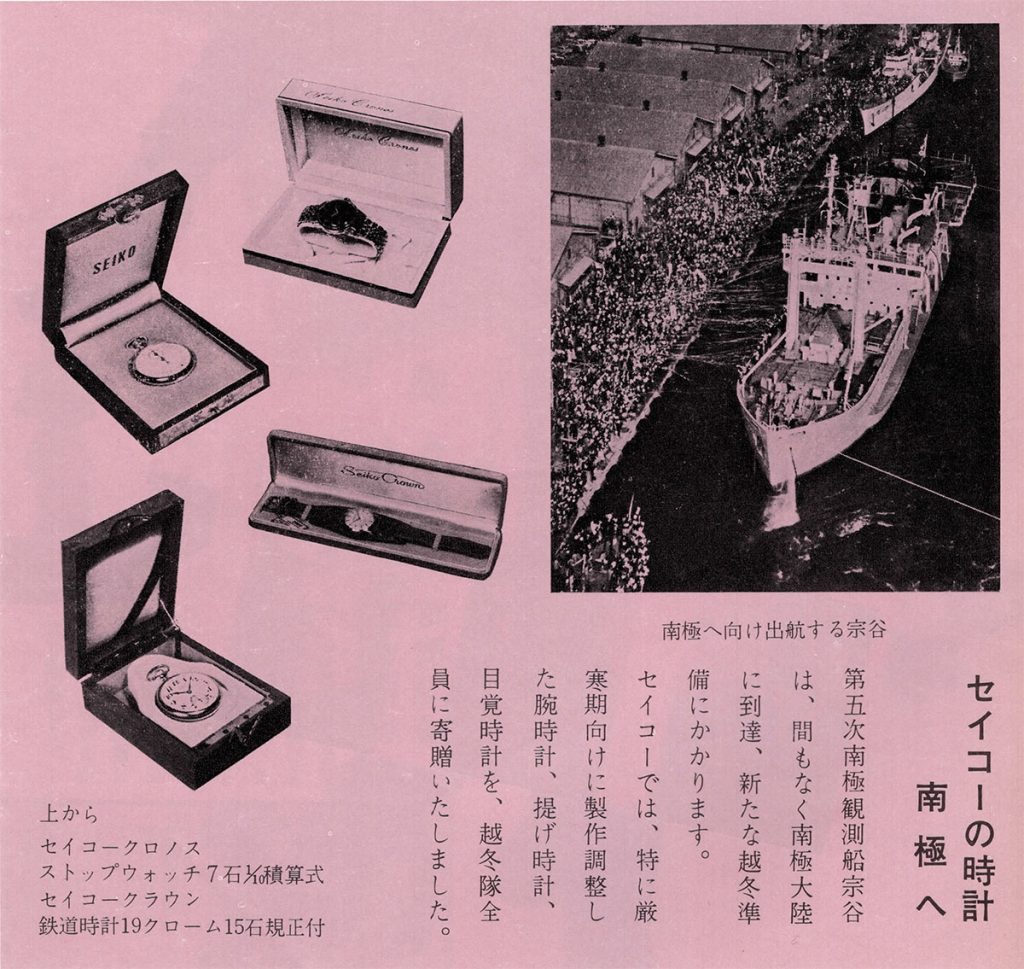
“Seiko Watches Head to Antarctica.
The Antarctic observation ship Soya from the fifth expedition is about to reach the Antarctic continent. Seiko has donated wristwatches, pocket watches, and alarm clocks to the team members, which were specially produced and adjusted for extreme cold.”
The depicted Seiko Cronos has a metal bracelet and a black dial, most likely with luminescent hands and indices.
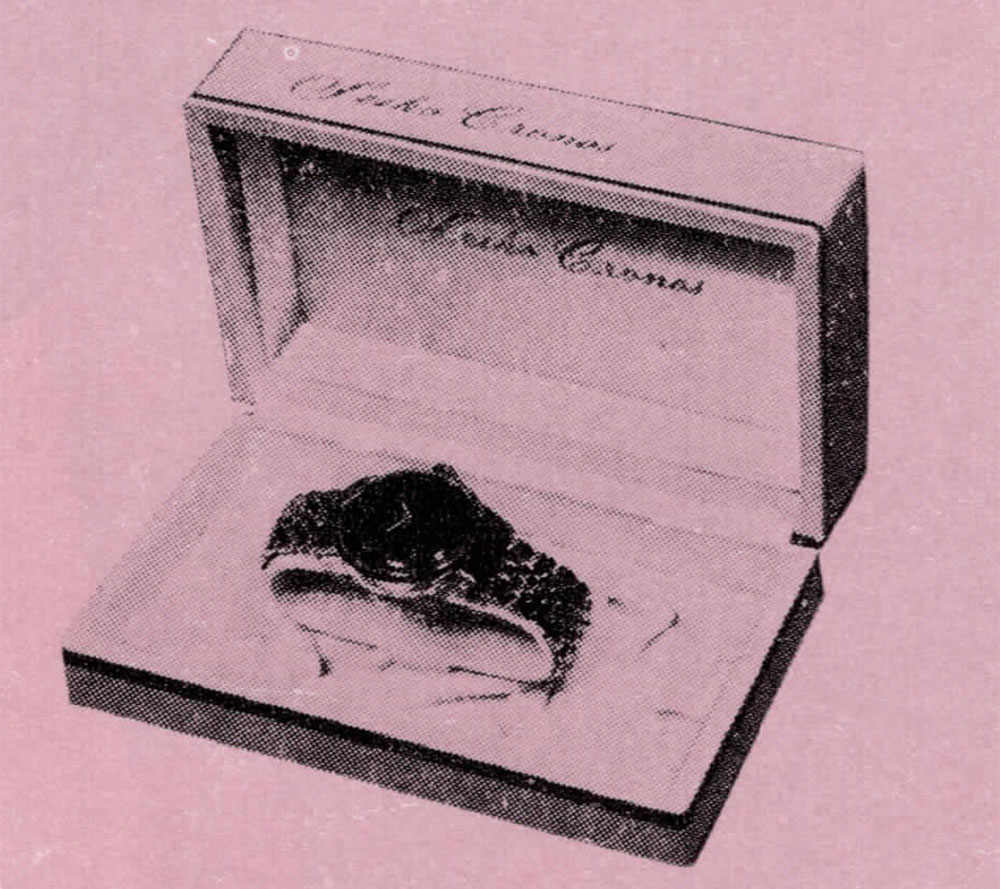
The other wristwatch visible in the image is a Seiko Crown, which appears to be equipped with a strap similar to that of the Laurel Alpinist.
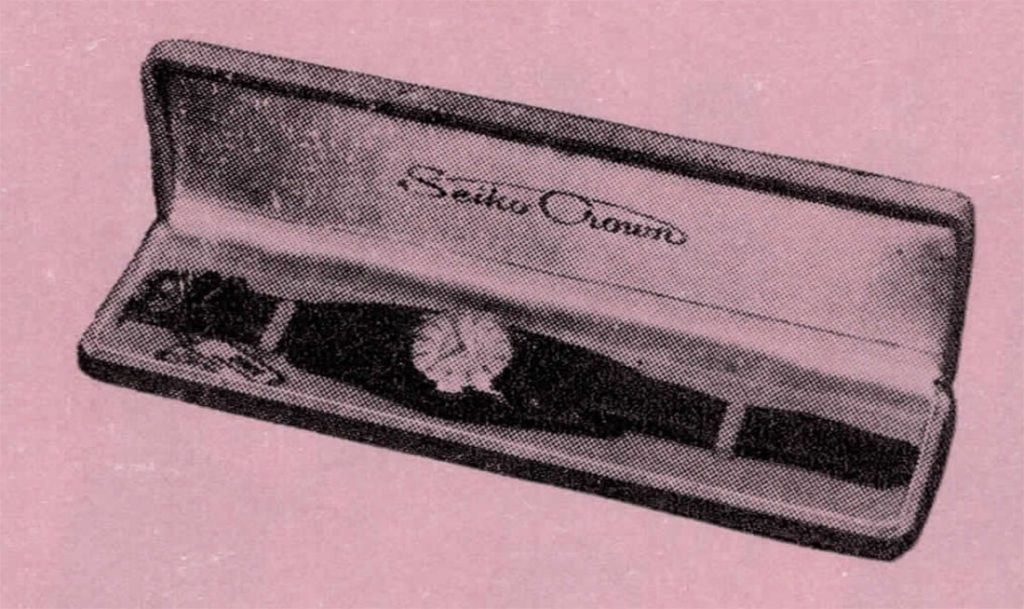
The Cronos can thus be considered the first Seiko “WaterProof” watch to be used in Antarctica as part of a JARE mission.